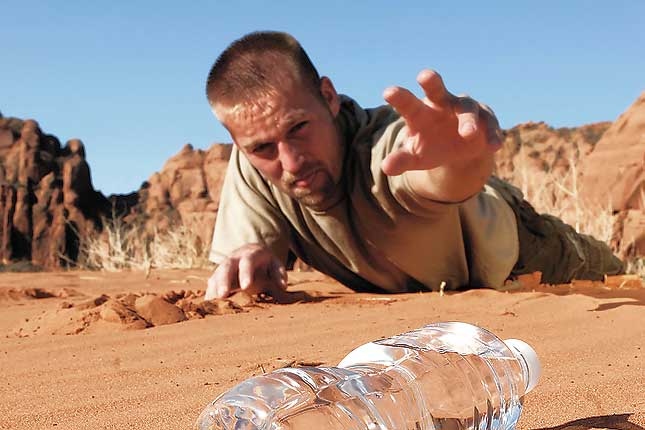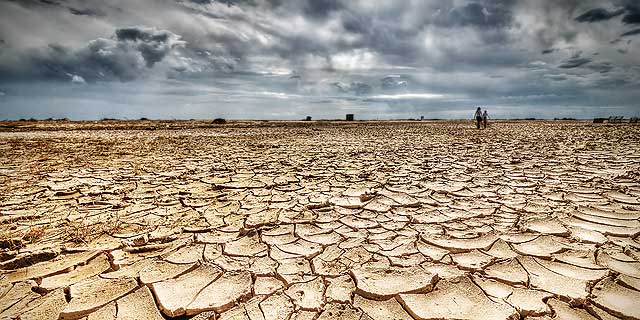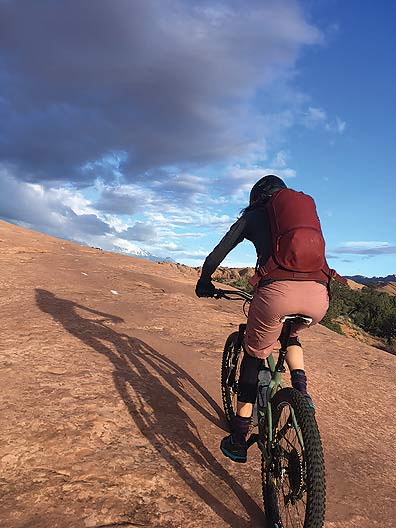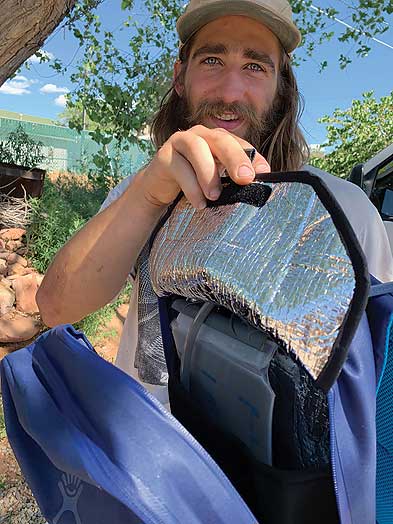Cycling HAPPENINGS July 2019 |
 Article courtesy of Rim Tours Mountain Bike Adventures 1233 S. Hwy 191, 435-259-5223 |
How To Not Die In The Desert |
It can also be the difference between a pleasant hike and a trip to the hospital. Some visitors to Moab have actually died from dehydration and heat-related illness. Despite these serious consequences, it’s easy to ignore the issue and not take it very seriously. But you do so at your peril. The high desert plateau on which Moab sits is not only blessed with super-hot summer temperatures – it also has extremely low humidity, which only compounds the problem. Most visitors arrive in Moab from more moderate climates with humidity in the range of 50% to 80% or more. From May through September, the humidity in the Moab region averages a mere 20 – 30%.
Back home, the higher humidity means this evaporation process forms beads of sweat on your skin while the cooling effectiveness is diminished. In Moab, the cooling effect is accelerated by the dry air, and, often, this perspiration process happens invisibly, without sweat ever forming on your skin. Though this invisible perspiration helps to make the higher temperatures more tolerable, that fact that it goes on morning, noon and night, without you noticing, means it is very easy for you to become dehydrated. Some people ask how much water they need to drink each day. Even without taking Moab’s extreme conditions into account, there is no simple answer. For the average person in a temperate climate, The National Academies of Sciences, Engineering, and Medicine determined that an adequate daily fluid intake is:
“These recommendations cover fluids from water, other beverages and food. About 20 percent of daily fluid intake usually comes from food and the rest from drinks.” If this seems like overkill, keep in mind that your body is comprised of approximately 70% water. And, according to a recent report by CBS, as many as 3 in 4 Americans go throughout their daily lives in a constant state of dehydration. When taking people out on half- and full-day mountain bike tours, we here at Rim Tours recommend riders carry up to 3 liters of water to get them through longer rides. The best advice is simply to drink lots of water – way more than you might normally think to drink. Drink water even when you’re not thirsty. Fill up on water before going to sleep and soon after you wake up in the morning. That way, when you head out for your day’s fun activities, you can avoid a very common mistake – suddenly finding yourself extremely thirsty, sucking down all the water you brought with you within the first hour, and having none left to get you through the rest of your hike, ride or whatever. As for carrying all that water while on your adventures, many people find they like a daypack with a built-in hydration bladder, such as are offered by most major backpack manufacturers (e.g. CamelBak, Osprey, etc.) There are even some newer models that offer an insulated compartment for keeping your water cool on the trail, like the one from Hydroflask pictured below:
|



